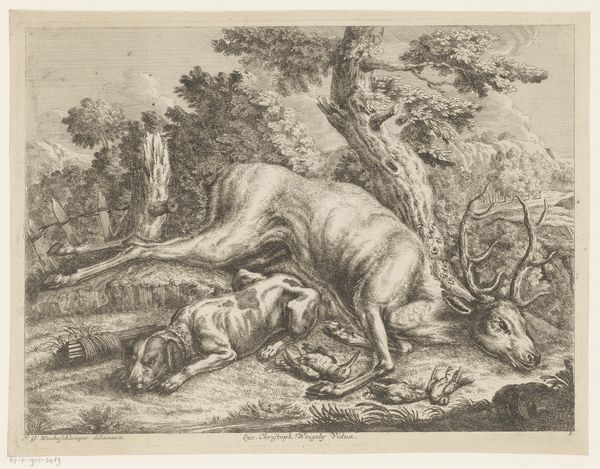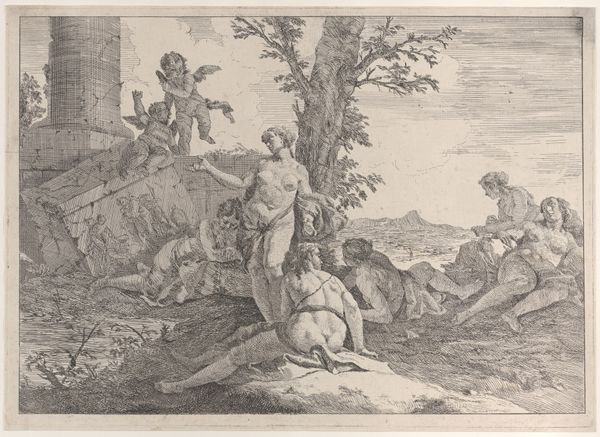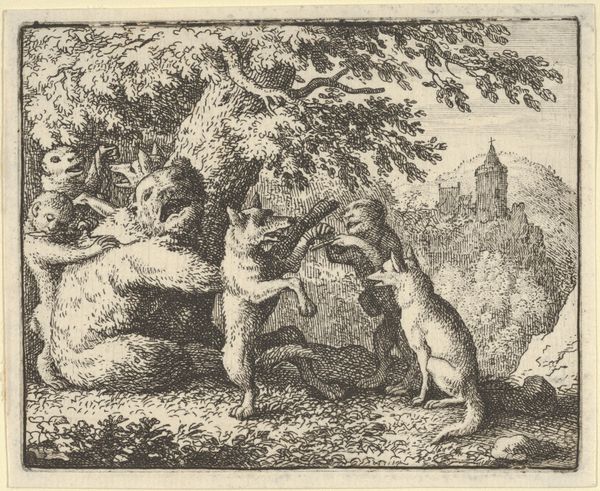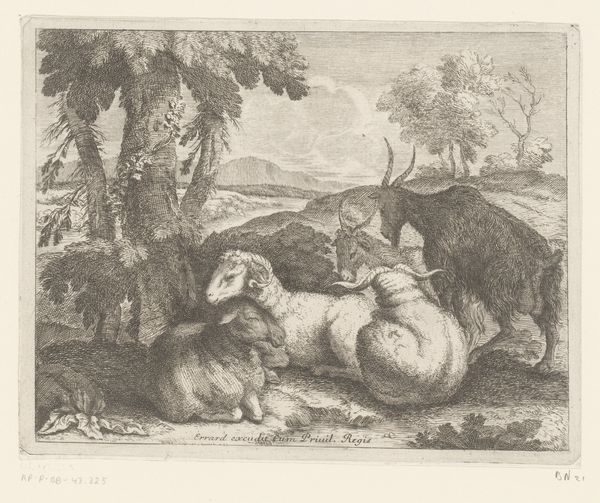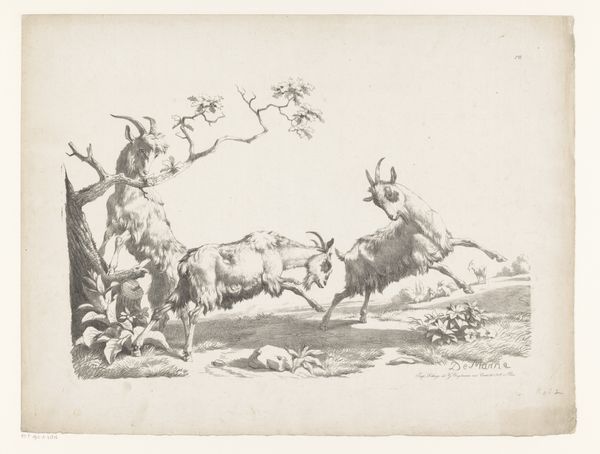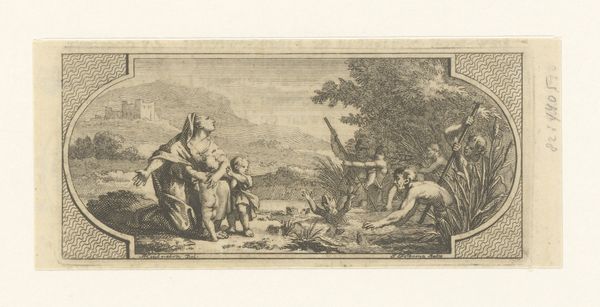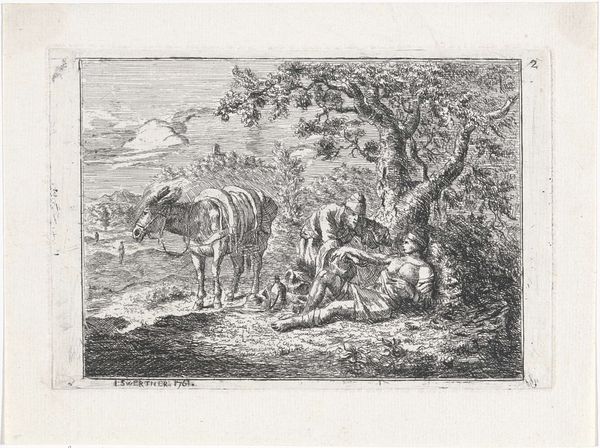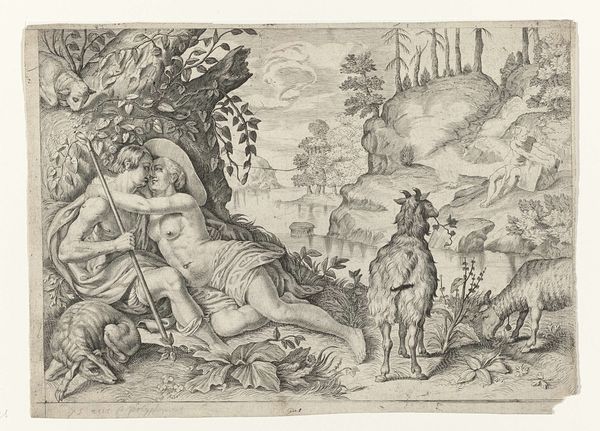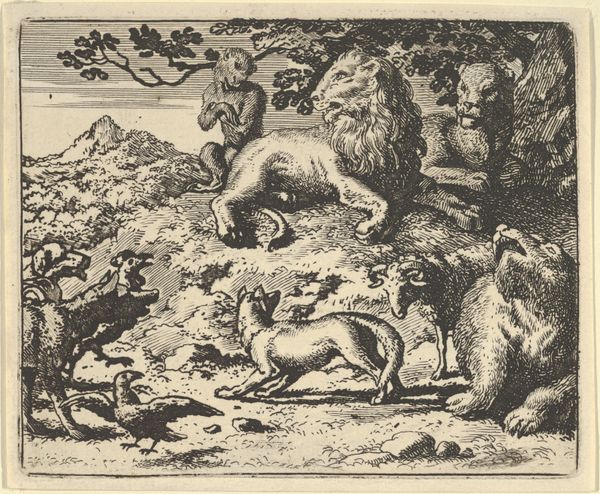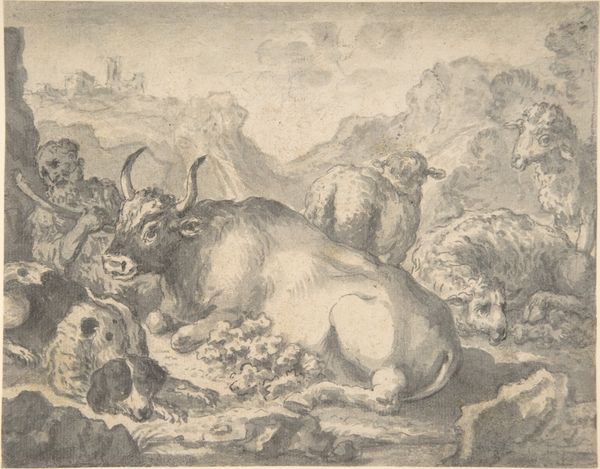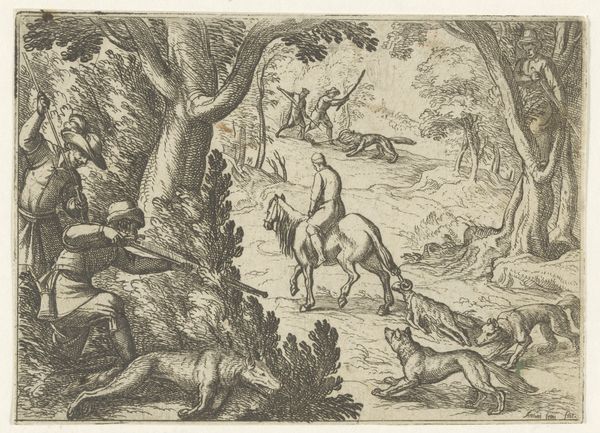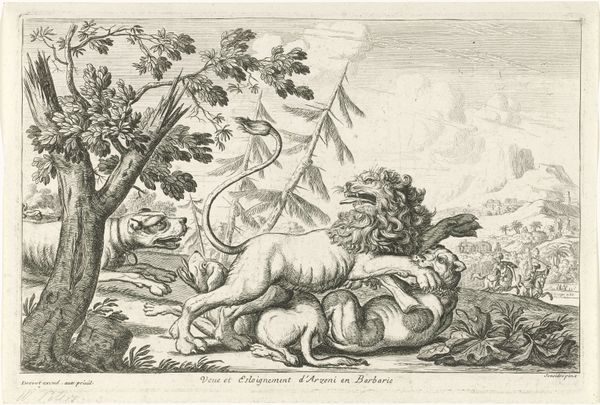
engraving
#
baroque
#
old engraving style
#
landscape
#
figuration
#
genre-painting
#
history-painting
#
engraving
Dimensions: height 235 mm, width 313 mm
Copyright: Rijks Museum: Open Domain
Curator: This engraving, likely created between 1725 and 1790, is titled *Jachthond en jachtbuit met zwijn, hert en vogels*, or “Hunting Dog and Booty with Boar, Deer, and Birds”. It’s attributed to Johann Georg Wachsschlunger. Editor: A visceral image, isn’t it? The composition immediately strikes me as an organized display of death and dominance. The stark detail in the animal textures – the dog's fur, the boar's bristles – it’s all so palpable. What's your reading? Curator: Absolutely. Think about the tradition it invokes. The dog, vigilant and proud, echoes images of fidelity and service seen for centuries. Then consider the game: the boar and the deer. The hunt was not merely sustenance, it was a theatre of status and societal order. The composition is designed to subtly reinforce that order. Editor: True, the materials also suggest something of this status. Engraving, as a printmaking technique, enabled relatively wide circulation of imagery and values for a burgeoning middle class interested in, but not necessarily participating in, aristocratic lifestyles. The labour involved is also telling, each line carefully etched… Curator: Indeed. The use of stark lines mimics the crisp aesthetic championed during the Baroque period. Notice how Wachsschlunger contrasts the textures of the fur against the smooth skin of the birds and deer. Death rendered almost decorative, further highlighting how we are meant to understand it within this visual schema of control. Consider how, across time, this scene resonates – humans and animals have remained locked in relationships where power and exploitation shape their destinies. Editor: Which begs the question: who held that power and who bore the burden? The very materiality reminds me of those exploited, too – those who worked the land, who tracked and killed the game and engraved plates for a living, who enabled that consumption and display. Curator: Well, there's undeniable complexity in these layered signs of Baroque society. Wachsschlunger gifts us an image laden with multiple meanings that ask as much of us today as it would have when it was crafted. Editor: For me, engaging with such detailed engravings is a tactile and historical experience. It is a testament to skilled labor, embedded with societal cues and meanings that invite endless dialogues.
Comments
No comments
Be the first to comment and join the conversation on the ultimate creative platform.


